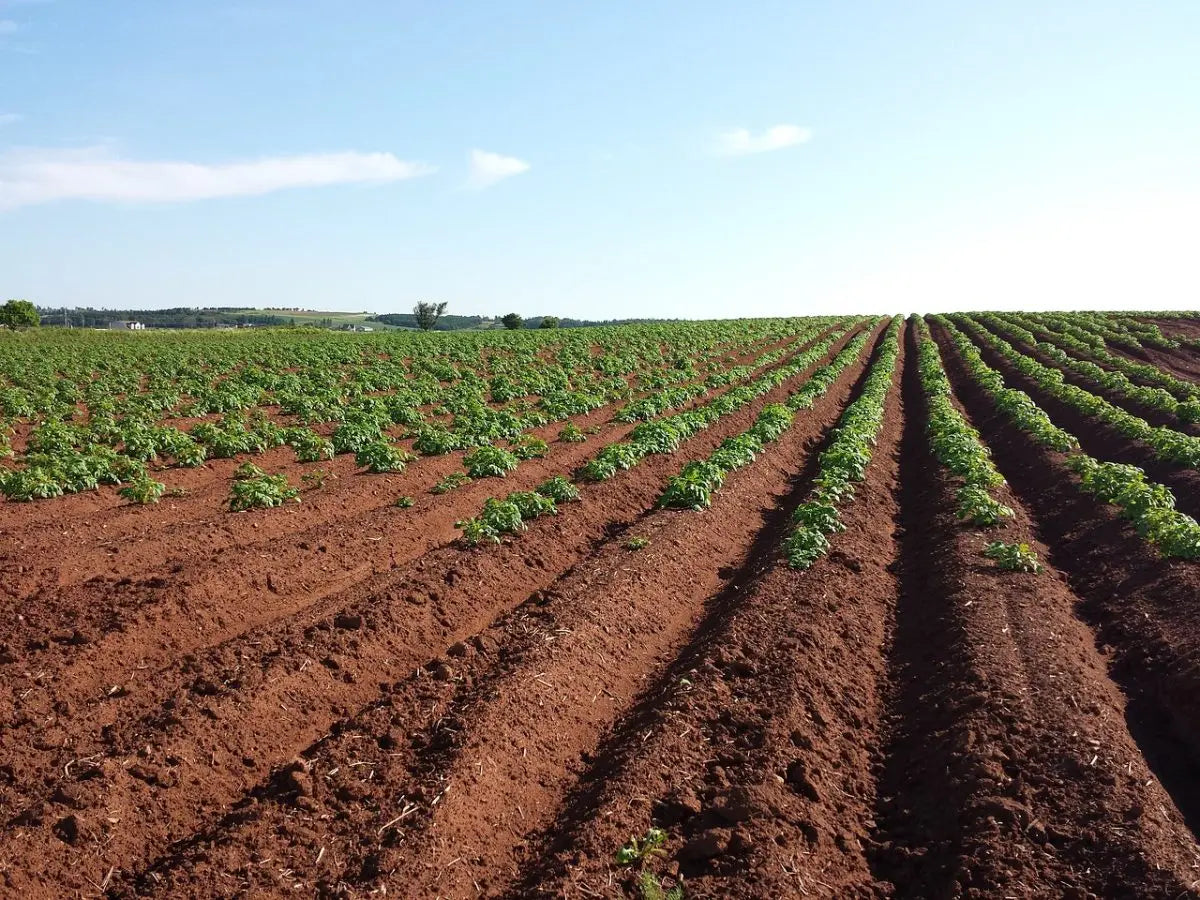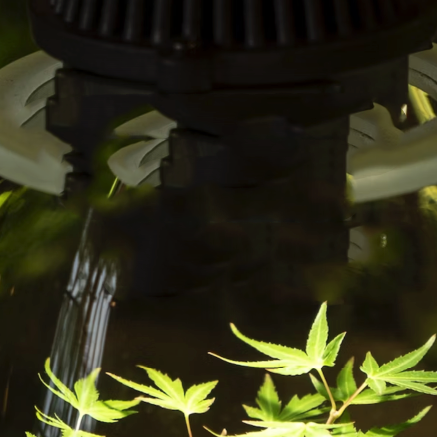Growing the Natural Way
Plain old soil is amongst the most natural things on this planet. It's almost everywhere, with the only notable exceptions being deserts, the arctic regions, and the sea..
Evolution and Soil
The soil on planet earth has been created by the progression of millions of years of biological activity. When plants eventually came out of the oceans on to dry land, there was little to cling to other than rock. However, the plants brought with them a whole host of bacteria, fungi and other micro organisms, collectively known as microbes. Whenever a plant died, it would be broken down by bacteria and fungi into a mulchy compost. This provided natural, organic matter for the next generations of plants to root into. This cycle repeated for millennia, eventually creating the swathes of soil that we see around us today.
It's Teeming with Life!
Along the way, soil inhabiting microbes evolved that live synergistically with plant roots. Together, the plants and the micro-organisms thrived, colonising the planet.
The plethora of different species of microbes that inhabit the soil work together as a community, each doing a particular job that contributes to what we might call healthy and fertile soil. For example, some species take nitrogen from the air where it is plentiful and turn it into nitrates in the soil which plants can then absorb via their roots as nutrient. Other types of microbe create humates which are natural chelators of minerals - again creating molecules which are easily taken up by roots as food.
Other organisms, such as mycorrhiza and trichoderma fungi, grew along with plant roots, protecting them and passing on water and nutrients.
By way of reciprocation, some of the sugar that plants make via photosynthesis is secreted through their roots to provide energy for the organisms to feed on. Thus, a symbiotic relationship is formed where both parties benefit from each other.
Utilising Nature for Happier Plants
As indoor growers, our plants can benefit greatly if these beneficial organisms are present in the root-zone. They increase availability of nutrients. They also stimulate the plant's immune system and increase growth.
They thrive particularly well in their natural environment - soil, but they also do very well in coco coir too. Although clay pebbles is not their natural habitat, they can and do adapt, breed and do their work despite this.
There are many high quality beneficial microbial additives, such as the excellent Ecothrive Biosys, that can be had from most good hydroponics stores. This allows a grower to introduce an extra layer of naturality to their grow and can lead to happier, healthier and more disease resistant plants. However, to take full advantage of going along this route means that other aspects of growing need to be adapted.
One of the most important of these is ensuring that nothing goes into the soil that might hurt or inhibit the "microherd".
Ensuring We Don't Hamper the Microherd
First of all, any peroxide treatment is an absolute no-no. Peroxide will kill microbes, beneficial or not, stone dead.
Secondly, it is very wise to remove as much chlorine/chloramine from tap water as possible. Chlorine or chloramine is added to water by the water supply companies. This is to keep it sterile and safe for us to drink. Unfortunately, there will still be some chlorine or chloramine in the water when it comes out of the tap. Watering our plants with this water as it is will at least inhibit the activity of the beneficial microbes if not actually kill them.
Leaving the water to stand for 24 hours can allow chlorine to evaporate out of the water (chloramine will not evaporate out of it). Unfortunately, the dissolved oxygen in the water will also start to come out of it as it warms up. Warm water holds less dissolved air (and most importantly, the oxygen in it) than cold air. As cold tap water warms up, the air that it can no longer stay dissolved in it ends up as bubbles, and often end up on the surface of its container.
Oxygen is vital for healthy roots and for the microbes. Using an air pump and air stone and "bubbling" the water while it sits will help to keep the water oxygenated as much as possible, but you will still have to hope that your water company only uses chlorine and not chloramine. Chloramine is very persistent and will not come out with standing or by bubbling.
Bubbles of air clinging to the sides of a glass of water that has stood and warmed up for several hours
There's another advantage of allowing water to warm up to room temperature (as long as you keep it oxygenated with an air pump and airstone). Giving room temperature water does not shock the roots and microherd like cold water can.
Another approach is to use a reverse osmosis filter. Unfortunately, while RO units take both chlorine and chloramine out of the water, they do take quite a while to process a large amount of water. They also take out minerals such as calcium and magnesium too. You will need to use a nutrient that is designed for RO water (see the manufacturers website), or put a little back in with a good quality calcium-magnesium additive such as Plant Magic Magne-Cal+. RO water has an E.C. of zero. If you are using a nutrient that has not been designed for RO water then put enough cal-mag product into the RO water to bring it up to an E.C of about 0.4. (C.F of 4) before adding anything else.
While that works very well, the simplest and cheapest solution to this is to use Ecothrive Neutralise. A single drop of this stuff and a good stir will completely neutralise all the chlorine and chloramine in a litre of water almost instantly. It turns them into harmless by-products, making the water completely safe and harmless to the beneficial microbes.
Grown carefully, the quality of the final crop will be top shelf too! Most organic feeds contain sugars from molasses (a thick dark brown liquid. This feeds the microherd so that the plant can keep the sugar it would normally feed them for itself. This means more growth and a sweeter crop. Our favourite fully organic feeds are Plant Magic Oldtimer, Biobizz, and Canna Bio.
There's some great soils to use with them too: Plant Magic Soil Supreme, Biobizz All-Mix, Biobizz Light-Mix or the superb Ecothrive Eco-Life Supercharged Soil.
Grow organically and your crop will likely be in big demand and worth top dollar prices!
Top 6 Tips for Growing Organically
- Use a top quality soil like one of those above
- Use a top quality organic feed like one of those above
- Regularly use a top quality beneficial microbe additive like Ecothrive Biosys. We'd recommend you add the superb Ecothrive Charge to your soil too.
- Always treat your feed water with Ecothrive Neutralise to get rid of chlorine and chloramine
- Use British Organic Bio nutrients!

